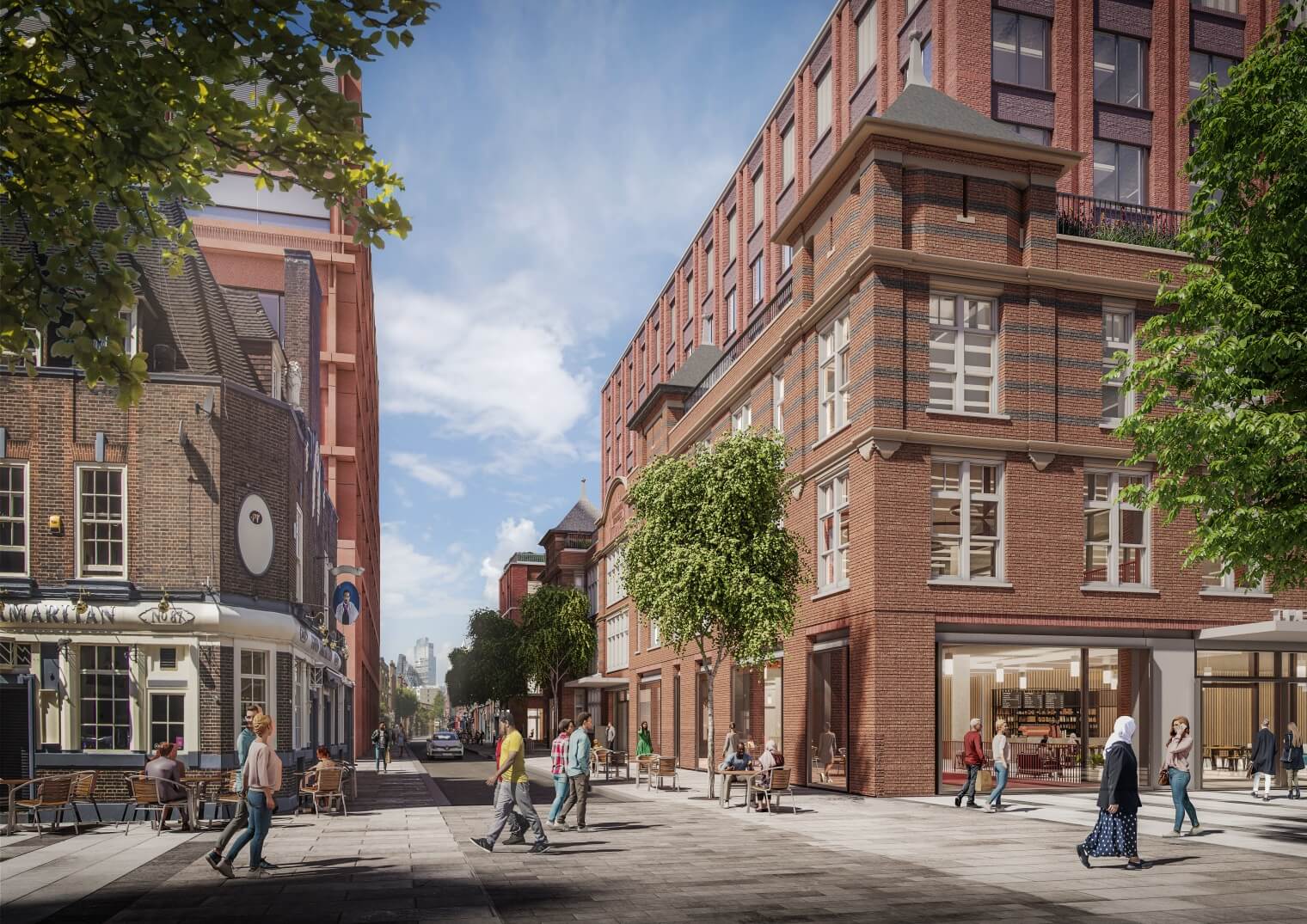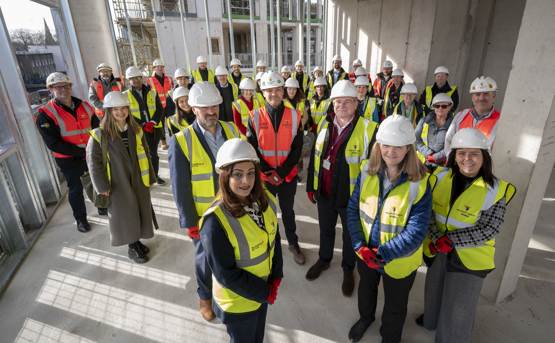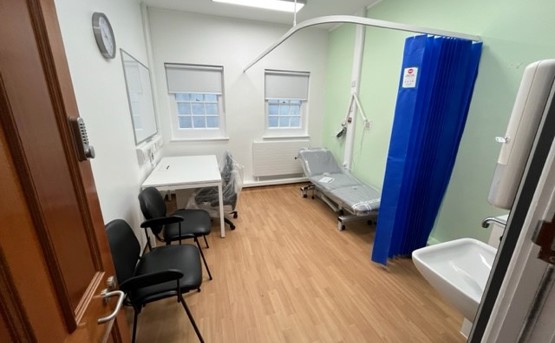
Published date: 17 February 2022
Whitechapel vision to be completed as plans submitted for life sciences scheme
NHS Property Services (NHS PS) on behalf the Department of Health and Social Care (DHSC) have submitted plans to redevelop five underused and vacant plots of land in the heart of Whitechapel, to create a new life sciences cluster next to the Royal London Hospital.
NHS Property Services (NHS PS) on behalf the Department of Health and Social Care (DHSC) have submitted plans to redevelop five underused and vacant plots of land in the heart of Whitechapel, to create a new life sciences cluster next to the Royal London Hospital.
The five plots of land, which are underused and contain mostly vacant buildings, cover an area equivalent to two and a half football pitches next to the Royal London Hospital. These plans will breathe new life into these buildings, creating high quality space which will be flexible and adaptable to a wide range of life science uses. The cluster will draw on Whitechapel’s diverse population to undertake more inclusive research that reduces health inequalities.
The application will build on the existing foundations of life science activity in the locality, with the proposed masterplan adjacent to the Royal London Hospital, QMUL and QMB Innovation Centre. Whitechapel is also the ideal location for such a cluster to help meet demand for life science space, being so well-connected in terms of location and public transport, particularly with the Elizabeth Line due to open soon.
These ambitious proposals will have a transformational impact on Whitechapel and are expected to create between 3,470 – 5,660 full time jobs and further training opportunities for local people, that range across the life science sector and beyond. Those working in the new life science cluster could spend between £7-12 million per year in the local area boosting local trader’s activity and businesses.
A wide variety of improvements to the roads and public spaces around the area is also proposed, making it more welcoming, easier to get around, more attractive, healthy and safe. New trees, planting and lighting will be incorporated to improve the environment, and lively ground floor building uses will add to the vibrancy of the area and help improve natural security. A new public space next to St Augustine with St Philip’s Church will offer a quiet space to sit, rest and dwell amongst lush planting and trees.
This new masterplan for the area and investment in public spaces around Turner Street and Stepney Way will provide natural surveillance and activation, as well as improvements to street lighting. The setting of the Conservation Area and the neighbouring listed buildings will also be enhanced by the proposed building and public realm designs, including the façade retention of the historic Outpatients Department.
QMUL recently announced a property deal with DHSC for the university to take a major stake in the development and operate a new life sciences facility in one of the new buildings. QMUL already has a strong presence in Whitechapel for life sciences research, innovation, education and engagement, which the new facility will substantially augment.
This area of Whitechapel is already undergoing significant regeneration; the new Royal London Hospital opened in 2012 and the former hospital site is being brought back to life by London Borough of Tower Hamlets with its new town hall and civic centre. The new Whitechapel Crossrail station will form an important public transport interchange for both the Underground and London Overground and will expand the reach of Whitechapel as an employment destination.
Adrian Powell, Development and Planning Director, NHS Property Services said:
“We are delighted to be leading this project on behalf of the Department for Health and Social Care and working towards a positive decision on the planning application we have submitted to the Council.
This development represents an opportunity to create a vibrant community and commercial cluster that we hope will support a broadly based Life Sciences, technology and innovation ecosystem, providing quality jobs in the area and the best health outcomes for local people. The proposed improvements to the street scene and public areas will also provide a safe, green and attractive place for locals to work, relax and meet.”





